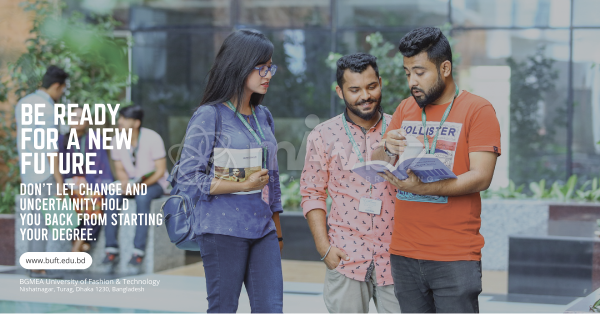After independence in 1971, rebuilding Bangladesh, the war-ravaged country, with limited resources appeared to be the biggest challenge. The scenario was aggravated by a huge pressure from the unskilled workforce. Human Resource was one of the potential sectors that could bring a positive change. A holistic change was the only need to explore the immense hidden opportunities in earning sectors like agriculture, foreign remittance, tourism, IT and RMG. With its 82% of total export earnings of...
Read More
After independence in 1971, rebuilding Bangladesh, the war-ravaged country, with limited resources appeared to be the biggest challenge. The scenario was aggravated by a huge pressure from the unskilled workforce. Human Resource was one of the potential sectors that could bring a positive change. A holistic change was the only need to explore the immense hidden opportunities in earning sectors like agriculture, foreign remittance, tourism, IT and RMG. With its 82% of total export earnings of the country, RMG has now become the largest foreign exchange earner as well as the largest employer in the country. Apart from 5.5 million direct employments in RMG in Bangladesh, this industry has employed more than 20 million Bangladeshi workers in its whole value chain. The ‘Made in Bangladesh’ tag has brought glory for the country, making it a prestigious brand across the globe. This has resulted in textile, knitting, apparel and fashion sectors having a growing demand for graduates, experts, engineers and technicians who possess the interfacial skills and competencies needed for efficient management and this is being met by hiring foreign nationals.
Keeping this high demand of experts and skilled workforce in mind, the Government of Bangladesh and the Bangladesh Garments Manufacturers and Exporters Association (BGMEA) visualized the need for creating a centre of excellence that will provide training, research, innovation and development services in aforementioned fields. The noble board of trustees laid the groundwork for what would become today's BGMEA University of Fashion & Technology on July 9, 2011, when the group gathered to hold the University's inaugural board meeting and drafted the University's articles of incorporation. This guiding document outlined elements the founders believed would build an enduring legacy for the University: a commitment to offering a rigorous academic program and an ambition to provide opportunities of higher education in all disciplines of knowledge to persons of both sexes on equal terms.
On March 14, 2012, the Ministry of Education of Bangladesh issued the University's official certificate of incorporation in accordance with the Private University Act of 2010 followed by the University Grants Commission (UGC) of Bangladesh’s approval on March 20, 2012, marking the formal beginning of the University's life.
Academic inclusiveness has been the key thought in the expansion plans of the university. Since the early years of its inception, the university has provided a firm foundation in apparel, textile, knitting, fashion and business education in the domains of manufacturing technology, engineering, design and management. Since then, BUFT has continued to set and achieve higher academic standards. The in-house faculty has been drawn in from a distinguished group of intellectuals who put forth a sense of dynamism creating a pathway to effective learning. BUFT regularly strengthens its academic strategy. Invigorating thought leadership, research stimulus, industry focus, creative enterprise and peer learning have reinforced the university’s academic bedrock. Fostering a new generation of creative thinker, the university is empowered to award Degrees in undergraduate and graduate studies. In pursuance of its objective of providing comprehensive world-class academic learning environment, the university has entered into strategic alliances with leading international universities, institutions and organisations.
BUFT is committed to academic excellence in apparel, textile, knitting, fashion, business and language education. The vision of the university embraces challenges and provides the impetus in setting highest academic standards. BUFT continues to strive to be nothing but the best.
After independence in 1971, rebuilding Bangladesh, the war-ravaged country, with limited resources appeared to be the biggest challenge. The scenario was aggravated by a huge pressure from the unskilled workforce. Human Resource was one of the potential sectors that could bring a positive change. A holistic change was the only need to explore the immense hidden opportunities in earning sectors like agriculture, foreign remittance, tourism, IT and RMG. With its 82% of total export earnings of...
Read More
No existing sales at this time
No existing deals / offers at this time
No existing coupons at this time
No existing coupons at this time


